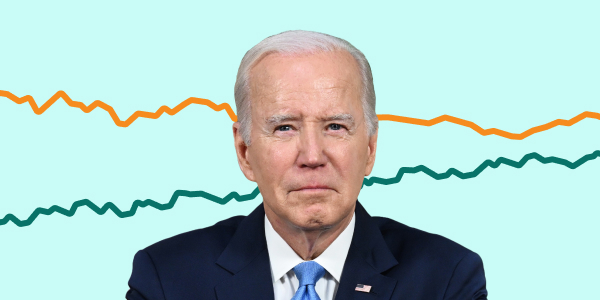Why Texas Democrats see this local race as key to turning state blue
By Saul Elbein - 10/16/24, 12:15 PM EDT

Democratic Party activists have been on a mission to flip all of the state’s urban counties — once Republican bulwarks — as they look to chip away at the GOP’s decades-long hold on the state.
They’ve almost succeeded in that mission. Only one Republican-held county remains: Tarrant County, home of Fort Worth. If Democrats flip the sheriff’s seat there in November, that result would suggest the party is on its way to controlling the entire county.
While this downballot organizing push has gotten far less attention than the top-line drama of the presidential race — and the question of whether Texas Democrats will flip their first statewide seat in the generation — it is potentially even more significant, a campaign to break the Republican deadlock on power that was rammed through 20 years ago.
“Tarrant County is really the only thing that's keeping the Republicans in the game,” Rep. Marc Veasey (D-Texas) told The Hill. The county, he said, is “an outlier — the last thing on the board that Democrats need to be able to move into the driver’s seat.”
“Once we start winning big in Tarrant County, then we win statewide,” Veasey added. “And then it’s game over for Republicans."
Tarrant County is both numerous and strategically significant — a stronghold of far-right activists and a base for their organizing across the state. If Democratic activists succeed, the county will become like Gov. Greg Abbott’s (R) home county of Dallas, Lt. Gov. Dan Patrick’s (R) home county of Harris and Attorney General Ken Paxton’s (R) home county of Collin — once ruby-red Republican bases that are now solidly blue.
This cycle, Tarrant County Democrats are targeting Sheriff Bill Waybourn (R), who has presided over dozens of mysterious deaths in the county jails — and millions of dollars in settlements with deceased prisoners' families — over his two terms.
In April, for example, county deputies choked a prisoner to death — an incident for which 15 jailers have been indicted — marking 64 deaths in the county jails since Waybourn took over. Also this year, the county agreed to pay out $200,000 to a prisoner beaten by guards; $750,000 to the family of a woman who died of dehydration in her cell; and $1.2 million to a woman whose baby died after she gave birth alone in her cell.
The Hill has reached out to Waybourn for comment. The sheriff told CBS last month that “obviously we want to treat everybody that comes into the jail with dignity and respect, regardless of what their circumstances are."
Meanwhile, Waybourn — a law enforcement official with a jurisdiction almost in Oklahoma — has cast himself as an expert on the state’s southern border.
“He's not interested in the job, or he's just not equipped to do the job. Either way, he's not serving Tarrant County very well at all,” said State Rep. Chris Turner (D), who flipped a red-leaning Arlington seat in 2008.
To Democrats, Waybourn isn’t just a vulnerable incumbent — he represents a clear lane of attack following a model that seeks to peel off Republicans in the state’s increasingly minority-dominated urban and suburban counties.
And if Democratic challenger Patrick Moses beats Waybourn next month, Democrats hope it will be a bellwether. In once-red urban counties across the state — Dallas, Bexar, Harris — the Democratic capture of the sheriff’s seat has typically been the first sign of a county shifting blue.
In a sense, Democrats are following the cities-first pattern by which Republicans took the state.
In 1963, George H.W. Bush — then the chair of the Harris County Republican Party, which was just starting to make significant inroads — laid out a vision of taking power by peeling off conservative Democrats unhappy with the party’s rhetoric on race, or its corrupt and unaccountable rural machines.
Bush called on his party to rein in its own racists and anti-communist “extremists” and position Republicans as the much-maligned party of good government.
If Republicans successfully won county office in 1964, Bush wrote, “there can be little question of the inevitability of a state-wide movement to the Republican party.”
That prophecy took generations to fulfill. While Texas cities were solidly Republican by the 1990s — and while it was a solidly Republican state presidentially after 1980 and in terms of the statewide executive after 1994 — the state Legislature remained competitive into the 21st century.
Before 2000, the Texas congressional delegation was mostly Democratic, and local Democrats still dominated most Texas counties, even as their residents increasingly voted for Republicans for national and state office.
But in 2002, Republicans captured the state House for the first time in more than a century. Republicans under House Majority Leader Tom DeLay (R-Texas) and state House Speaker Tom Craddick (R) pushed through partisan redistricting — breaking up competitive, majority-minority districts and packing them into few enough safe Democratic districts to guarantee a permanent Republican majority even as long-term demographic trends favored Democrats.
The plan ultimately wrecked DeLay’s career, but for Democrats, the damage was done. After 2003, Texas-based Democratic consultant Matt Angle told The Hill, it was clear that Democrats had lost the state for a generation and would have to fight tooth and nail to recapture it.
Angle’s Lone Star Project set out to change that by flipping Texas’s big urban counties, which at that time were virtually all Republican strongholds.
The party “really started focusing on trying to win county-level and downballot-level races, with the hope that we would get to a point where we could compete statewide,” Angle told The Hill.
Beginning with its mid-2000s campaigns in Dallas County — a famous bastion of conservatism since President Kennedy's assassination — Lone Star Project sought to build new, local Democratic political machines.
The net result, Angle said, is “just like if you were trying to run an individual candidate against a Republican — except what you're doing is running the Democrats against the Republicans,” Angle said.
As the state Republican Party became ever more conservative, particularly after the election of President Obama in 2008, Lone Star Project’s campaign settled into one perennial message, Angle said: “The Republicans are after your personal freedoms, your personal liberties.”
In 2004 —the year after redistricting, and buoyed by presidential election-year turnout — Lupe Valdez, a Latina lesbian and former federal agent, won the Dallas County Sheriff’s race, making her the first Democrat to win countywide office in decades.
The following cycle, Democrats swept Dallas County, and over the next three cycles, the county became solidly and increasingly Democrat. In 2012, Mitt Romney lost by 110,000 votes, a spread which kept widening; in 2020, Trump lost by 291,000.
Other Democrats used similar strategies to flip parts of the city’s suburbs using similar messaging. They also replicated it in other cities.
In 2008, Democrats, aided by groups such as Lone Star Project's First Tuesday, carried Harris County — fending off Republican attacks that the party was soft on crime by, as Angle said, “talking about justice and how every neighborhood should have safe streets, not just some.” The rising number of Democrats in local office tracked Harris County’s leftward shift in presidential elections; while Obama took the county by only 19,000 votes in the presidential race of 2008, President Biden carried it with 217,000 in 2020.
Those kinds of gains wouldn’t be a problem for Republicans, given their control of rural and suburban areas, “if they're winning the election by a million votes,” said Joshua Blank of the Texas Politics Project at the University of Texas at Austin.
But as margins tighten election after election, Blank said, the GOP is not maintaining its cushion. Instead, Trump won in 2020 by just more than 600,000 votes — and Sen. Ted Cruz (R) in 2018 by just more than 200,000 votes.
If Democrats are able to add 250,000 to their vote total in each urban county, then it “doesn’t matter if Republicans can get 75 percent of the [rural] vote," Blank added.
Adding Tarrant County to that list will be hard, Veasey acknowledged — Biden carried it by fewer than 2,000 votes in 2020.
But he said Republicans such as Waybourn are vulnerable to attacks on law and order, and this race, Democrats are targeting not only him but also two far-right county commissioners.
If Democrats can begin taking county offices, Veasey argued, the histories of other counties provide evidence that voters realize "'Hey, Democrats really aren’t that bad after all. ... They're doing a good job in these key positions countywide.' And then we win by wider margins.”
Hanging over the party, Veasey added, is the mother of all deadlines: 2030, the next round of redistricting. By then, he said, Democrats need to have recaptured at least the state House — or they face another decade of maps that lock them out of power.
That’s a warning to Texas Democrats to be “realistic,” Veasey said, and “articulate issues where all Texans can get behind, and we need to get behind these candidates and help them win — or Republicans are just going to draw these maps like this all over again.”


















